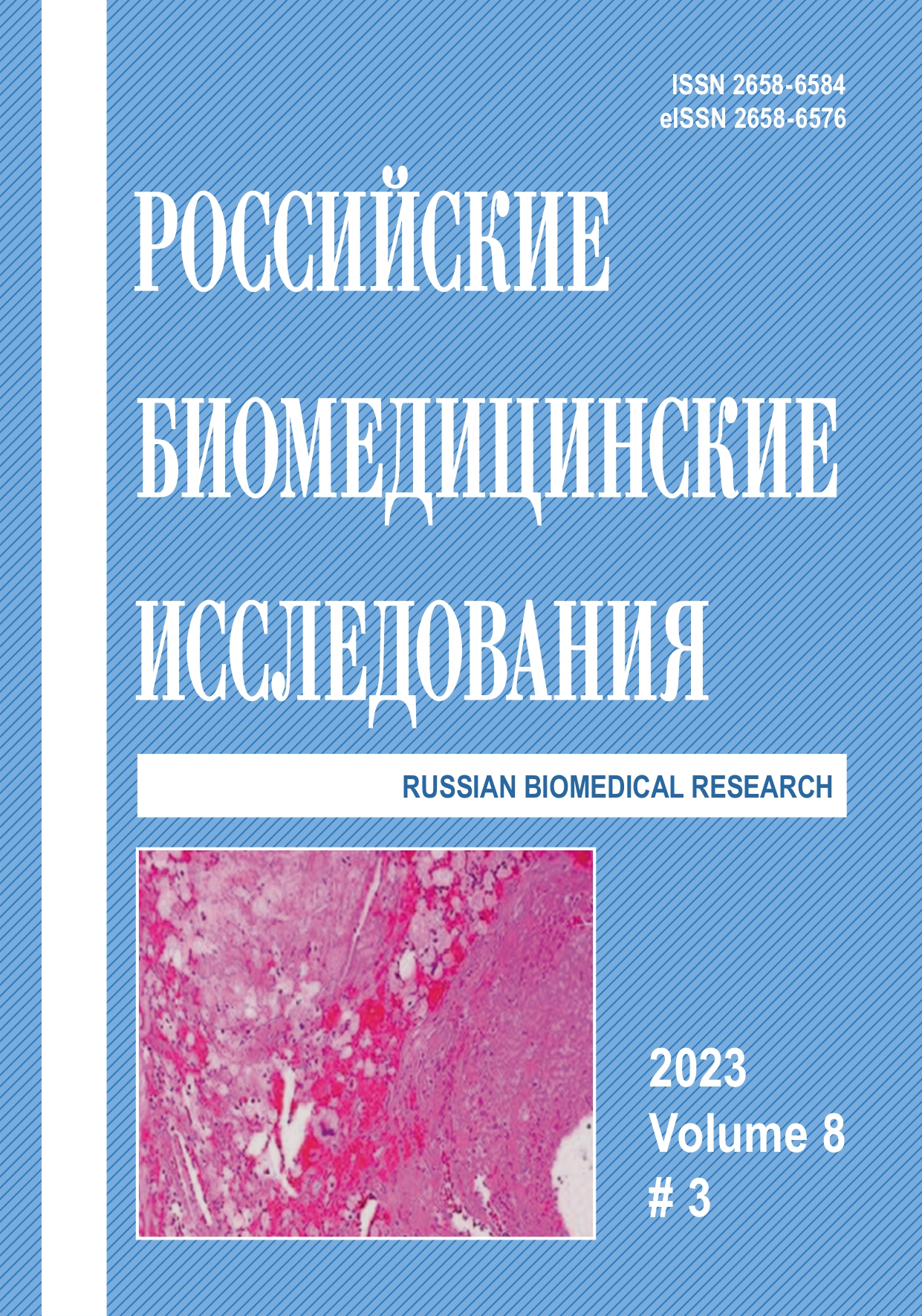COVID-19 IN PATIENTS WITH ACUTE LIMB ISCHEMIA
Abstract
Introduction. Acute limb ischemia (ALI) is defined as an abrupt decrease in arterial perfusion of a limb with a threat to viability of the limb. Coronavirus disease 2019 (COVID-19) is caused by severe acute respiratory syndrome coronavirus 2, and has been declared as a global pandemic by the World Health Organization. Infection with SARS-CoV-2 has been shown to have a wide range of clinical presentations from asymptomatic in a large percentage of patients to devastating pulmonary failure, sepsis, and death. Patients with COVID-19 have deranged blood coagulation parameters and are prone to thromboembolic events. This hypercoagulable state caused by COVID-19 mainly manifests as venous thromboembolism. Peripheral arterial involvement is less frequent. We present 3 cases of a spontaneous ALI in a COVID-19 patient. Case. A 62-year-old man with an insignificant past medical history presented with ALI 12 days after an initial diagnosis of COVID-19. He was on therapeutic doses of low molecular weight heparin when ischemic symptoms developed. A surgical thrombectomy was unsuccessful. He partially benefited from intravenous unfractionated heparin and iloprost infusions. He was discharged home on postoperative day 14, and is scheduled to have an amputation of the 1st toe. Conclusions. COVID-19 infection is associated with an increased incidence of thromboembolic events, including ALI. Even young and otherwise healthy patients may develop ALI despite the use of prophylactic anticoagulation. Management of ALI in COVID-19 patients might be harder than expected, due to the hypercoagulable state. Patients may benefit from prolonged post-operative unfractionated heparin administration.
References
Bjorck M., Earnshaw J.J., Acosta S. et al. J.C. Van Den Berg, Editor’s choice-European society for vascular surgery (ESVS) 2020 clinical practice guidelines on the management of acute limb ischaemia, Eur. J. Vasc. Endovasc. Surg. 2020; 59(2): 173–218.
Gomez-Arbelaez D., Ibarra-Sanchez G., Garcia-Gutierrez A. et al. COVID-19-related aortic thrombosis: a report of four cases, Ann. Vasc. Surg. 2020; 67: 10–3.
Han H., Yang L., Liu R. et al. Prominent changes in blood coagulation of patients with SARS-CoV-2 infection, Clin. Chem. Lab. Med. 2020; 58(7): 1116–20.
Tang N., Li D., Wang X., Sun Z. Abnormal coagulation parameters are associated with poor prognosis in patients with novel coronavirus pneumonia, J. Thromb. Haemostasis. 2020;18(4): 844–7.
Bilaloglu S., Aphinyanaphongs Y., Jones S. et al. Thrombosis in hospitalized patients with COVID-19 in a New York city Health system, JAMA. 2020; 324(8): 799–801.
Bellosta R., Luzzani L., Natalini G. et al. Acute limb ischemia in patients with COVID-19 pneumonia, J. Vasc. Surg. 2020. (article in press).
Perini P., Nabulsi B., Massoni C.B. et al. Acute limb ischaemia in two young, non-atherosclerotic patients with COVID-19, Lancet. 2020; 395(10236): 1546.
Baccellieri D., Bilman V., Apruzzi L. et al. A case of COVID-19 patient with acute limb ischemia and heparin resistance, Ann. Vasc. Surg. 2020; 68: 88–92.
Varga Z., Flammer A.J., Steiger P., Haberecker M. et al. Endothelial cell infection and endotheliitis in COVID-19, Lancet. 2020; 395(10234): 1417–8.
Piazza G., Morrow D.A. Diagnosis, management, and pathophysiology of arterial and venous thrombosis in COVID-19, JAMA. 2020; 324 (24): 2548–9.
Imdes J.E., Koleilat I., Hatch A.N. et al. Early experience with arterial thromboembolic complications in patients with COVID-19, J. Vasc. Surg. 2020. (article in press).
Shalbub S. The mystery of COVID-19-associated arterial thrombosis, J. Vasc. Surg. 2020. (article in press).
Obara H., Matsubara K., Kitagawa Y. Acute limb ischemia, Ann. Vasc. Dis. 2018; 11 (4): 443–7.
Kuchay A.A., Lipin A.N., Antropov A.V. et al. Treatment of multilevel lesions of arteries in lower extremities in cases of CLTI. Medical Alliance. 2022; 10(S3): 187–9. EDN IWSMIP.
Кучай А.А., Липин А.Н., Карелина Н.Р., Артюх Л.Ю. Реваскуляризация нижней конечности на основе концепции ангиосомы с ранней локальной реконструкцией лоскута (клинический случай). Forcipe. 2022; 5(4): 29–35.
Кучай А.А., Липин А.Н., Карелина Н.Р. и др. Реваскуляризация при протяженных окклюзиях поверхностной части бедренной артерии и многоэтажных поражениях артерий нижней конечности. Forcipe. 2022; 5(3): 4–14.
Кучай А.А., Липин А.Н., Антропов А.В. и др. Гибридный подход в лечении протяженных окклюзий артерий нижних конечностей при КИНК. Ангиология и сосудистая хирургия. 2019; 25(2): 260–264.
Кучай А.А., Липин А.Н., Антропов А.В. и др. Лечение многоэтажных поражений артерий нижних конечностей при КИНК. Ангиология и сосудистая хирургия. 2021; 27(2): 410–412.
Кучай А.А., Липин А.Н., Антропов А.В. и др. Концепция «ДИСТАЛЬНОГО ГИБРИДА» при протяженных окклюзиях поверхностной бедренной артерии с тяжелым поражением путей оттока при критической ишемии нижних конечости. Ангиология и сосудистая хирургия. 2022; 28(S1): 157–161.
Кучай А.А., Липин А.Н., Антропов А.В. и др. Гибридный подход к протяженным окклюзиям ПБА при КИНК. Ангиология и сосудистая хирургия. 2022; 28 (S1): 161–163.
Курьянов П., Липин А., Антропов А. и др. Ангиопластика подколенной артерии при хронических тотальных окклюзиях с дистальной посадочной зоной и без нее. Annals of vascular surgery; 2020; 62 (68): 417–425.
Copyright (c) 2023 Russian Biomedical Research

This work is licensed under a Creative Commons Attribution 4.0 International License.



